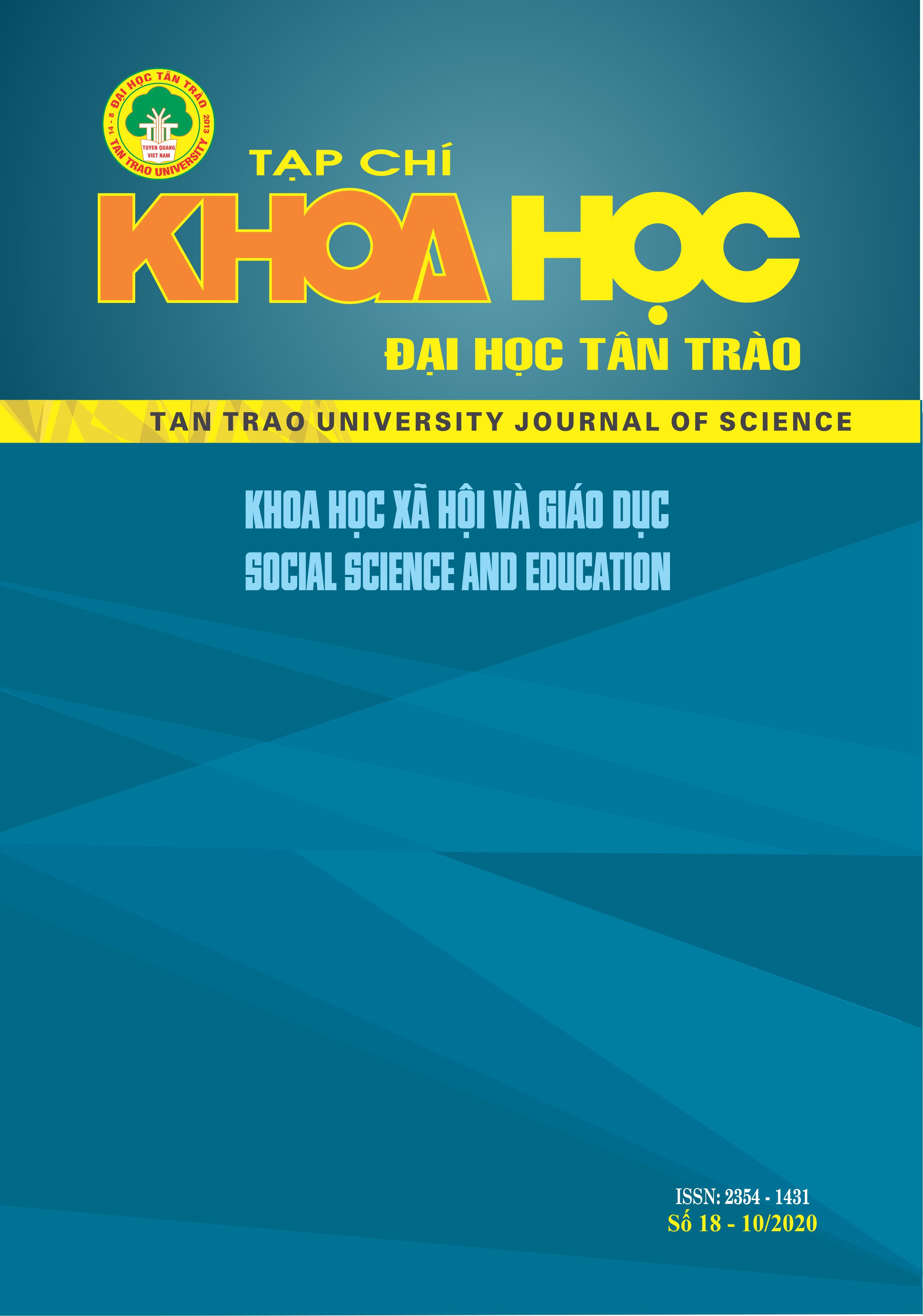CHANGES IN THE BELIEFS OF RESIDENTS ON HON TRE ISLAND, NHA TRANG CITY
DOI:
https://doi.org/10.51453/2354-1431/2020/418Keywords:
Change of beliefs, change in culture, beliefsAbstract
The article mentions the status of beliefs of residents on Hon Tre island with its changes in the current context. On that basis, we will clarify the changes in beliefs; practice of beliefs; gods, places of worship and offerings of worship. At the end of the report are some conclusions about the process of changing beliefs of the residents on Hon Tre island, besides, it pointed out the parallel existence of two movement trends of beliefs, that is to keep the beliefs according to the old (traditional) way and change to suit the new situation.
Downloads
References
[1] Truong Thi Quoc Anh (2015), Cultural life of residents of Hon Tre island, Nha Trang city, Khanh Hoa province, Master thesis of Culture, University of Social Sciences and Humanities (Vietnam National University, Ho Chi Minh City).
[2] Nguyen Duy Bac (2008), The changes of cultural values in building a market economy in Vietnam today, Encyclopedia Publishing House and Institute of Culture, Hanoi.
[3] Tran Viet Kinh 2004, Bich Dam Island Village, Printed in Ancient Village in Nha Trang. Khanh Hoa Art and Literature Publishing House, p.170-173.
[4] Le Hong Ly (2002), "Some coastal folklore features in the market economy", Journal of Folklore, No. 3 (81), p.38-49.
[5] Ngo Duc Thinh (2000), Folklore of coastal residents, Social Science Publishing House, Hanoi.
[6] Nguyen Thi Hai Yen (2002), Socio-economic assessment in Hon Mun conservation area. Exprimental project of Hon Mun marine protected area, Publishing House of Nha Trang Institute of Oceanography.
[7] Inglehart, Ronald and Wayne E.Baker (2000), “Modernization, Cultural Change and Persistence of Traditinonal Values”American Sociological Review, Vol.65, No.1.
[8] Bronislaw Malinowski (1992), Magic, Science and Religion, Waveland Press, Illinois: 87.
[9] Spindler, Louise S. (1977), Culture change and Modernization: Mini-models and Case Studies New York, Holt, Rinehart and Winston.
Downloads
Published
How to Cite
Issue
Section
License

This work is licensed under a Creative Commons Attribution-ShareAlike 4.0 International License.
All articles published in SJTTU are licensed under a Creative Commons Attribution-ShareAlike 4.0 International (CC BY-SA) license. This means anyone is free to copy, transform, or redistribute articles for any lawful purpose in any medium, provided they give appropriate attribution to the original author(s) and SJTTU, link to the license, indicate if changes were made, and redistribute any derivative work under the same license.
Copyright on articles is retained by the respective author(s), without restrictions. A non-exclusive license is granted to SJTTU to publish the article and identify itself as its original publisher, along with the commercial right to include the article in a hardcopy issue for sale to libraries and individuals.
Although the conditions of the CC BY-SA license don't apply to authors (as the copyright holder of your article, you have no restrictions on your rights), by submitting to SJTTU, authors recognize the rights of readers, and must grant any third party the right to use their article to the extent provided by the license.


